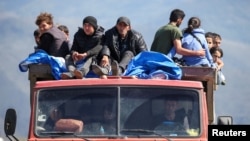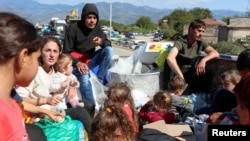More than a thousand refugees were registered as individual entrepreneurs and/or fully or partly owned businesses, Khachatrian told a government meeting chaired by Prime Minister Nikol Pashinian.
The latest jobs data shows a sharp increase from the number of officially employed Karabakh Armenians recorded by the Armenian Ministry of Labor and Social Affairs in early December. It stood at 5,350 at the time.
More than 100,000 ethnic Armenians making up Karabakh’s virtually entire remaining population fled to Armenia in late September as Baku regained full control of the region after two days of fighting that left hundreds of soldiers from both sides dead.
Most refugees have since struggled to find new housing and sources of income. Thousands have reportedly migrated to other countries, mainly Russia, for these reasons.
The lack of adequate housing remains a particularly acute problem. Since November, the government has been paying each refugee, who does not own a home or does not live in a government shelter, 50,000 drams ($125) per month for rent and utility fees.
Also, Pashinian’s government approved last month a five-year program of financial assistance to Karabakh Armenians willing to buy or build new homes in mainly rural areas. Each of them, including children, will be eligible for between 2 million and 5 million drams ($5,000-$13,000) in government grants that could only be used for meeting their housing needs.
Most refugees have until now preferred to live in villages and towns close to Yerevan because finding a job there is much easier than in other parts of the country. Many of them say the sums offered by the government are not enough to buy or build even modest homes there.
In a separate development, the government announced on Thursday that the European Union will provide 15 million euros ($16 million) in additional aid to the refugees. They money will be spent on meeting their “urgent needs,” it said in a statement.

